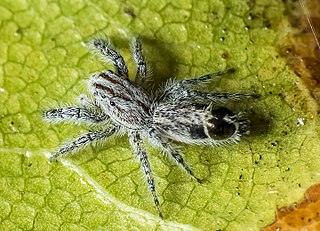
The sac spiders of the family Clubionidae have a very confusing taxonomic history. Once, this family was a large catch-all taxon for a disparate collection of spiders, similar only in that they had eight eyes arranged in two rows and conical anterior spinnerets that touched, and were wandering predators that built silken retreats, or sacs, usually on plant terminals, between leaves, under bark, or under rocks. These are now recognized to include several families, some of which are more closely related to the three-clawed spiders, like lynx and wolf spiders, than to Clubionidae and related families.
Zorocratidae is a formerly accepted family of spiders. Most of the genera formerly placed in this family have been transferred to the family Udubidae. The type genus, Zorocrates, is now placed in the Zoropsidae.

Tengellidae is a former family of spiders that has been merged into the family Zoropsidae. Genera formerly placed in Tengellidae now in Zoropsidae include:

Zoropsidae, also known as false wolf spiders for their physical similarity to wolf spiders, is a family of cribellate araneomorph spiders first described by Philipp Bertkau in 1882. They can be distinguished from wolf spiders by their two rows of eyes that are more equal in size than those of Lycosidae.

Abracadabrella is a genus of spiders in the family Salticidae whose spp. appear to mimics flies. The type species for the genus was described by Ludwig Koch (1879) as Marptusa elegans, transferred to Ocrisiona by Eugène Simon (1901) then placed into Abracadabrella by Marek Żabka (1991).

Lycosoidea is a clade or superfamily of araneomorph spiders. The traditional circumscription was based on a feature of the eyes. The tapetum is a reflective layer at the back of the eye, thought to increase sensitivity in low light levels. Lycosoids were then defined by having a "grate-shaped" tapetum. Research from the late 1990s onwards suggests that this feature has evolved more than once, possibly as many as five times, so that the original Lycosoidea is paraphyletic. Studies published in 2014 and 2015 suggest that a smaller group of families does form a clade.
Cethegus elegans is a species of spider in the genus Cethegus found in Queensland.
Dolomedes elegans Taczanowski, 1874 is a spider species in the family Pisauridae, found in French Guiana.

Abracadabrella elegans is a species of jumping spider in the genus Abracadabrella. Its common name is Elegant Fly Mimic. It is reasonably common in coastal Eastern Australia, mostly Queensland. It appears to mimic a large fly with two black raised, rounded mounds on the rear of the abdomen, which look like eyes, and its spinnerets which resemble a fly's mouthparts. It walks backwards apparently to enhance the mimicry. Abracadabrella spp. are found on or under bark or on foliage from coastal north Queensland south to at least the central coast NSW.
Zorodictyna is a genus of spiders in the family Udubidae native to Madagascar. It has been described as an intermediate genus between Zoropsidae and Dictynidae, though it is now placed in Udubidae. This genus was originally placed in the family Zoropsidae, but it has been reassigned several times since. In 1967, Lehtinen moved it to Miturgidae. In 1999, it was moved back to Zoropsidae, and in 2015, it was moved to Udubidae.
Austrotengella is a genus of Australian false wolf spiders that was first described by Robert John Raven in 2012.
Hoedillus is a genus of spiders in the family Zoropsidae. It was first described in 1898 by Simon. As of 2017, it contains only one species, Hoedillus sexpunctatus, found in Guatemala and Nicaragua.
Akamasia is a genus of spiders in the family Zoropsidae. It was first described in 2002 by Bosselaers. As of 2017, it contains only one species, Akamasia cyprogenia, found in Cyprus.
Cauquenia is a genus of spiders in the family Zoropsidae. It was first described in 2013 by Piacentini, Ramírez & Silva. As of 2017, it contains only one species, Cauquenia maule, found in Chile.
Kilyana is a genus of spiders in the family Zoropsidae. It was first described in 2005 by Raven & Stumkat. As of 2017, it contains 10 species, all found either in Queensland or in New South Wales.
Krukt is a genus of spiders in the family Zoropsidae. It was first described in 2005 by Raven & Stumkat. As of 2017, it contains 5 species, all found in Queensland.
Megateg is a genus of spiders in the family Zoropsidae. It was first described in 2005 by Raven & Stumkat. As of 2017, it contains 8 species, all from Queensland.
Takeoa is a genus of spiders in the family Zoropsidae. It was first described in 1967 by Lehtinen. As of 2017, it contains 2 species, both found in Asia.
Birrana bulburin is a species of spiders in the family Zoropsidae, from Queensland, first described by Raven & Stumkat in 2005. It is the only species in the genus Birrana.





